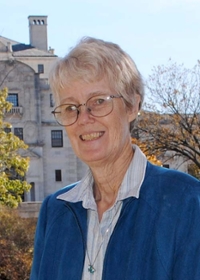Events
Mathematics & Statistics Colloquium: Leslie Hogben |
| Time: Mar 31, 2017 (04:00 PM) |
| Location: Parker Hall 250 |
|
Details:
Speaker: Leslie Hogben, Iowa State University (https://math.iastate.edu/directory/leslie-hogben/) Title: Enhanced principal rank characteristic sequences of symmetric and Hermitian matrices Abstract: For an \(n\times n\) symmetric matrix over a field or a complex Hermitian matrix, the principal rank characteristic sequence is \(r_0]r_1 r_2 \cdots r_n\) where \(r_k\) equals 1 or 0 according as whether or not there is a nonzero principal minor of order \(k\) for \(k=1,\dots,n\) and \(r_0=1\) if and only if \(A\) has a diagonal entry equal to zero. In 2012 Brualdi, Deaett, Olesky, and van den Driessche introduced the principal rank characteristic sequence in part to assist with the principal minor assignment problem for real symmetric matrices. This problem, to determine which \(2^n\)-vectors of real numbers can occurs as the minors of an \(n\times n\) real symmetric matrix, was highlighted as a challenge problem by Holtz and Schneider in 2004 and studied by Holtz and Sturmfels in 2007 via hyperdeterminantal relations. The enhanced principal rank characteristic sequence (epr-sequence) of a symmetric or Hermitian \(n\times n\) matrix is the sequence \(\ell_1 \ell_2 \cdots \ell_n\) where \(\ell_k\) is \({\tt A}\), \({\tt S}\), or \({\tt N}\) according as all, some, or none of its principal minors of order \(k\) are nonzero. The study of epr-sequences provides additional information that may be helpful in work on the principal minor assignment, while remaining more tractable than the full problem. Enhanced principal rank characteristic sequences were also used to answer the following question asked in 2004 by Johnson, Kroschel, and Omladič: ``For a real symmetric matrix, which lists of sizes, for which there exists a singular principal submatrix, can occur?" This talk will survey recent results for epr-sequences and distinguish the behavior of such sequences for symmetric matrices from those for Hermitian matrices. This talk is based on joint work with W. Barrett, S. Butler, M. Catral, S.M. Fallat, H. T. Hall, Xavier Martínez-Rivera, B.L. Shader, P. van den Driessche, and M. Young. Faculty host: T-Y Tam |

